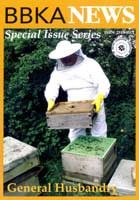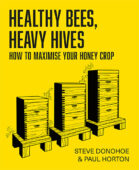
click image to zoom
Steve Donohoe
Paul Horton
Following on from Honey Farming by R.O.B. Manley (1946), and Honey By The Ton by Oliver Field (1983), Steve Donohoe and Paul Horton have produced a stunning book on beekeeping today, with a focus on increasing honey production. Clear diagrams and beautiful photographs complement a relaxed writing style which is both enjoyable and informative to read. Paul is a successful…
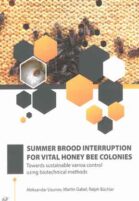
click image to zoom
Aleksander Uzunov
Martin Gabel
Ralph Büchler
The parasitic varroa mite remains the most serious problem for honey bee colonies worldwide. Despite various chemical treatments, many beekeepers still lose their colonies each year. This book sets out the authors' novel vision and practical steps on to how to manage bees for varroa control using a "nature based beekeeping" approach. With clear step-by-step charts on what to do…

click image to zoom
"Richly illustrated with the author’s photographs, there’s a first-hand commentary on what to look for and when just to trust the nurse bees to know their job. Highly recommended for any beekeeper, even with modest experience, who wishes to improve their stock." Geoff Hardman (Editor, Gwenyn Kernow magazine, CBKA) Say “queen rearing” to most beekeepers, and they will probably run…
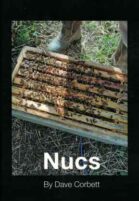
click image to zoom
All you need to know about nuclei colonies and their value. Dave Corbett lives in Bedfordshire, keeping bees with the assistance of his father, John. Dave began beekeeping in 2014, with a single hive in his back garden. From these small beginnings he has managed to expand his beekeeping operations to around 150 colonies, becoming a member of the Bee…
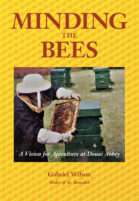
click image to zoom
All beekeepers will be aware of the important work carried out in the last century by Brother Adam and his helpers at the Benedictine monastery of Buckfast Abbey. Less is known, however, of beekeeping since 1933 at Buckfast's sister Benedictine monastery of Douai Abbey where an interest in the craft continues under the present beekeeper and monk, Dom Gabriel Wilson.…
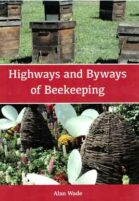
click image to zoom
Alan Wade is a research scientist and has kept bees for well over forty years. In Highways and Byways of Beekeeping he ventures down some of the many. back roads beekeepers have taken. He explores the limits of our knowledge and understanding of honey bees while introducing us to some of the lost arts of beekeeping practice. Highways and Byways…
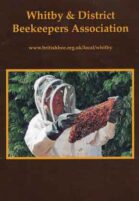
click image to zoom
Foreword by Sheila Rawson There can be no doubt in any beekeeper's mind of the complete commitment of John Dews to the conservation of Apis mellifera mellifera. He has devoted over 60 years to beekeeping and there can be little he does not know about bees through his assiduous observations of bee behaviour, bee breeding and his research into varroa…
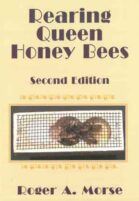
click image to zoom
This book is the second edition of a popular and practical guide for those who want to grow a few or many queens. Queen rearing has been in practice for over a century. It is an art which requires patience, skill and a steady hand. Whether you rear one, ten or a thousand queens, you must have a thorough knowledge…
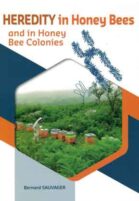
click image to zoom
A drone dies after mating. Nonetheless, his sperm will later transmit 100% of his genes to each of his daughters. A queen, on the other hand, because her egg is produced by cell division, will only transmit 50% of her genes to each of her offspring. To add to the complexity of honey bee genetics, a queen will mate with…
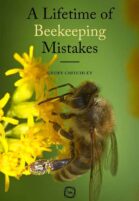
click image to zoom
A Lifetime of Beekeeping Mistakes covers all the basics of managing successful hives from buying in bee stocks and equipment to record keeping, establishing and growing colonies. It considers the merits of different types of hive and provides clear advice on queens, drones, honey extraction, diseases and pests. The book is written from the voice of experience rather than academic…
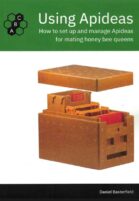
click image to zoom
Queen raising is one of the most rewarding aspects of beekeeping, allowing beekeepers to propagate the desirable characteristics of their best colonies throughout their apiaries. Father and son commercial beekeepers Ken and Dan Basterfield, both holders of the National Diploma in Beekeeping, have been using Apideas to raise their own queens for forty years. Here they present the tips and…
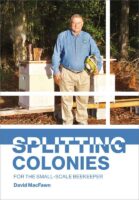
click image to zoom
Splitting Colonies is an important means of colony increase and swarming mitigation. Splitting is an art as much as a science. It should be noted splitting timing will vary year to year based on the local weather and conditions. This book contains information on when to split based on when the nectar flow starts in your area. Several splitting methods…
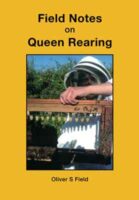
click image to zoom
This is an updated edition of the talk given by Oliver Field to the Scottish Beekeepers Association in 1998. This new version includes colour pictures, a bee breeding chart and a chapter on 'Current Reflections'. Oliver Field was a giant of Bee Farming, having acted as such for over thirty years. His other books include Honey By the Ton and…
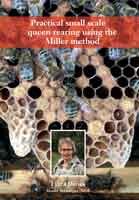
click image to zoom
Rearing new queens for our colonies is a rewarding and important practice that often gets mis-labelled as too difficult and complicated. This, is simply, not correct and with some planning and attention to detail new queens can be produced at a fraction of the cost that you will pay for them elsewhere. Queen rearing is an organised process where thought…
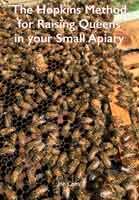
click image to zoom
Raise your own Queens and improve your stock. The Hopkins method requires no purchasing of queen rearing materials or kits, nor learning curve and skills required of grafting. Beekeeping presents many challenges, and one of the most troublesome is finding colonies with no queens.There are queen suppliers who are more than willing to sell you some queens, but the prices of…
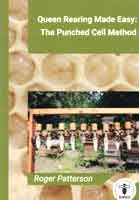
click image to zoom
Raising queens using the Punched Cell method has been in use since the early 20th century. Until now, the booklet "Raise Your Own Queens by the Punched Cell Method" by Richard Smailes, that was first published in 1970, was the most comprehensive source of information. Possibly due to the irregular supply of punches, few have continued to practice the method…
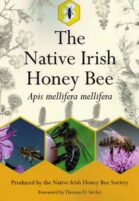
click image to zoom
A collaborative work with contribution from expert beekeepers and scientists throughout Ireland. It contains everything you need to know about the Native Irish Honey Bee - from evolution to genetics and into the future with conservation, and 'how to' sections from commercial beekeepers. Includes a practical section with step by step instructions on queen rearing and bee-breeding techniques. Most beekeeping…
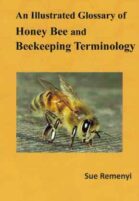
click image to zoom
An Illustrated Glossary of Honey Bee and Beekeeping Terminology is an invaluable reference book for all beekeepers. As with any activity there is always a significant amount of terminology and jargon to get to grips with and this glossary brings together the terminology a beekeeper needs. In addition, more advanced aspects of beekeeping such as the anatomy and biology of…
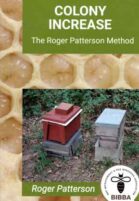
click image to zoom
This book includes several methods of colony increase that can be used individually or in one complete method as described. All elements, although they may not be part of mainstream teaching, have been consistently successful for the author for well over 40 years, using standard equipment. The "Roger Patterson Method", if used as described, can produce a tenfold increase in…
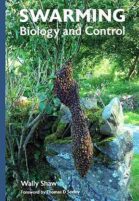
click image to zoom
One of the key events in the bee keeping year (for both the bees and the beekeeper) is the swarming season. In order to obtain the maximum honey yield from colonies, the beekeeper needs to manage the natural swarming process. Much has been written about swarming but this often takes the form of rather prescriptive instructions for swarm control which…
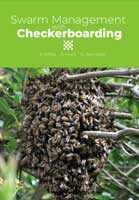
click image to zoom
J. White
Anita Hunt
Gill Bannister
John, Anita and Gill are likeminded hobbyist beekeepers that live in adjoining villages bordering West Berkshire and South Oxfordshire. They meet up regularly for support and to discuss all aspects of beekeeping. Of course discussions on swarming are always a hot topic! Join them for their take on the observational writings of Walter Wright, a retired NASA engineer, and his…
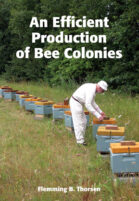
click image to zoom
An Efficient Production of Bee Colonies is written by Flemming B. Thorsen, a commercial bee-keeper who concentrates on breeding pure Danish Buckfast bees. There are no pure English Buckfast bees in Denmark anymore, but he continues to use the methods of Brother Adam from Buckfast Abbey in England. Flemming is a commercial queen breeder and produces many new colonies every…
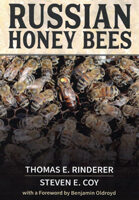
click image to zoom
Thomas E. Rinderer
Steven E. Coy
Russian Honey Bees are a stock of honey bees that were bred to be resistant to Varroa mites and have good beekeeping functionality for both honey production and pollination. This book describes the project to produce the Russian honey bee stock, conducted over 20 years of work by the combined efforts of scientists and beekeepers. Practical information on the management…
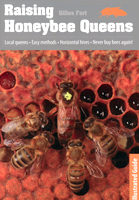
click image to zoom
Raise your own superior queens and you’ll never need to buy bees again! This fully illustrated guide makes self-sufficient beekeeping accessible to everyone: • Detailed, easy to understand practical advice. • Simple, time-tested techniques. • All hive models: vertical and horizontal. • Many methods to choose from. • Every step clearly explained. • Successful breeding, mating, and queen introduction. •…
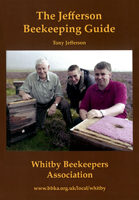
click image to zoom
All three generations of the Jefferson Family from Whitby, North Yorkshire are famed for their beekeeping knowledge and expertise. This 41 page booklet is full of advice and beekeeping knowledge that only long time experience can bring. Northern Bee Books strongly recommends this title. Tony writes in his introduction .. "
You may well gather as you thumb through this "booklet"…
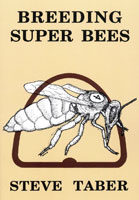
click image to zoom
Steve Taber spent a life time with bees - both in his native America and in Europe. It is not wrong to say that he forgot more about breeding than most people ever knew - and even then he knew more!! John Phipps the Editor of The Beekeepers Quarterly said that "If Steve said something you could always reckon on…
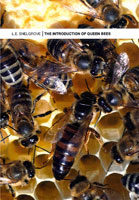
click image to zoom
We think that this is the most important book written by that Somerset Master of beekeeping. It reviews all the methods and is an essential manual for the keenest beekeeper.
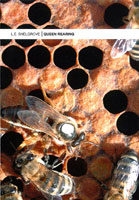
click image to zoom
A facsimile edition of the 3rd 1966 printing. Of use to all who consider this aspect of the craft.
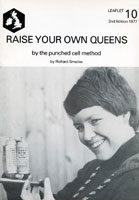
click image to zoom
This booklet leads one through the process of queen production by the punched cell method.
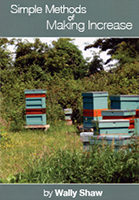
click image to zoom
This booklet originally published by the Welsh Beekeepers Association this title is meant for those with two or three hives who wish to make small increases without influencing the eventual honey crop.
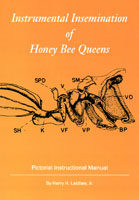
click image to zoom
The classic title for all who are considering this approach.
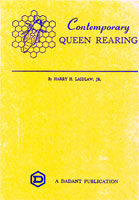
click image to zoom
A classic title written by a master of American beekeeping. A life times experience in Queen Rearing can be found inside these covers.
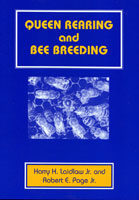
click image to zoom
Harry H. Laidlaw
Robert E. Page
A classic title written by a master of American beekeeping. A life times experience in Queen Rearing can be found inside these covers.
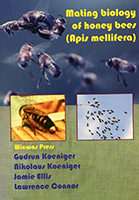
click image to zoom
Gudrun Koeniger
Nikolaus Koeniger
Jamie Ellis
Lawrence J. Connor
"This is the definitive review by authors who have personally carried out much of the primary research on the topic."Norman Carreck, Science Director, International Bee Research Association, University of Sussex, East Sussex, United Kingdom "… an authoritative treatise, built on decades of research of the authors on this subject…Personally, I very much appreciate this book as the authors put in…
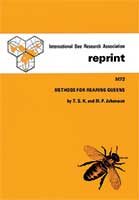
click image to zoom
T. S. K. Johansson
M. P. Johansson
A Bee World booklet which covers in a concise way the various methods available to beekeepers.
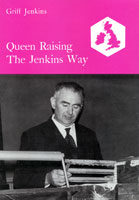
click image to zoom
A basic text detailing the manufacture of queen cups and grafting techniques.
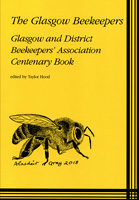
click image to zoom
The centenary publication covering all aspects of the craft.
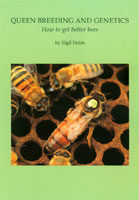
click image to zoom
After successful publication in Denmark (1995 ) and Germany (1997 ) this 2010 English translation deals with all aspects of mating and queen breeding. This is a translation of the second (2009) Danish edition, It is full of the latest information. The sub title - suggests much - and delivers on this promise. In full colour it covers The production…
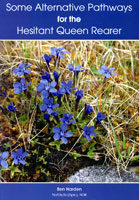
click image to zoom
There are many fine books on Queen Rearing which assume a high degree of skill. This is not one of them. Ben Harden a leading Irish beekeeper, and as far as we know, the only one from Eire to gain the National Diploma in Beekeeping. He reveals in this text the secrets of rearing queens. He covers grafting, queen cell…
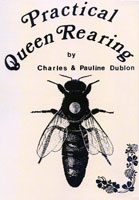
click image to zoom
Charles Dublon
Pauline Dublon
Charles Dublon is Principality Beekeeping Advisor for Wales, based at The Welsh Beekeeping Centre, College Howell Harris, Brecon, Powys. He has a masters degree in sugar technology, and is a Chartered Biologist. He is also a member of the Apicultural Education Association. Pauline Dublon, his wife, is a beekeeper in her own right. They have kept bees both as a…
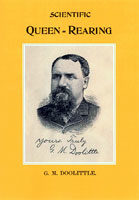
click image to zoom
Scientific Queen Rearing is one of the classic American titles in this area of beekeeping. This facsimile reprint of the 3rd edition of 1901 at 110% scale allows easier reading. There is much advice in this volume, although written over 100 years ago, which is relevant to the Queen rearers of today.
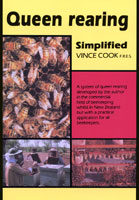
click image to zoom
A system of queen rearing developed by the author in the commercial field of beekeeping whilst in New Zealand but with a practical application for all beekeepers. When Vince Cook returned to the UK he was appointed National Bees Adviser to the MAFF. • The queen cells are produced in a honey production colony without impairing its honey production or…
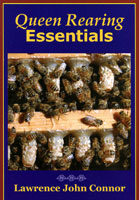
click image to zoom
A must-have for every beekeeper - filled with excellent photographs. In this post-varroa, post-Colony Collapse Syndrome era, beekeepers everywhere are developing localized, mite-resistant bee stocks. Key to this is their ability to raise queen cells and queens. Bee Culture/American Bee Journal author Larry Connor describes a very successful queen rearing method using Starter and Finisher colonies. The book is organized…
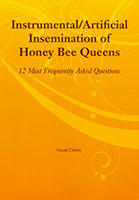
click image to zoom
As an introduction to instrumental insemination this publication addresses the frequently asked questions about the technique. The answers are meant to give direction to further inquiry and to help evaluate the need and what is involved in mastering this skill. Commercial queen producers recognise the need for more rigorous programs to select, improve and maintain their breeding stocks. The public…
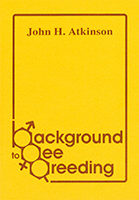
click image to zoom
John Atkinson draws on his long and varied experience as a beekeeping adviser, honey farmer, bee breeder and writer, to help beekeepers to understand the complexities of this most important aspect of the craft. This is a thoroughly absorbing book - an up to date treatise on the philosophy and practice of bee breeding.
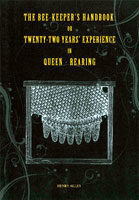
click image to zoom
Alley said .. "Containing the only scientific and practical method of rearing queen bees, and the latest and best methods for the general management of the apiary."
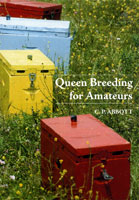
click image to zoom
Queen Breeding for Amateurs by Abbott was first published in 1947 and revised in 1951. With the present interest in beekeeping and the need once more to breed more queens, this reprint of Abbott's second edition has been reproduced with the support of the family. It should provide a valuable addition to the literature.
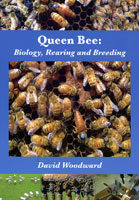
click image to zoom
Dr. David Woodward was Head of the Apiculture Department at Telford Rural Polytechnic, Balclutha, New Zealand. David taught beekeeping and queen bee rearing at Telford since 1997 and manages Telford's 350 beehives. Previously he was Senior State Apiculture Adviser with the Department of Primary Industries in South Australia (1990-97) and responsible to the state Minister of Primary Industries, for administering…
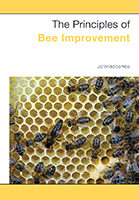
click image to zoom
Jo Widdicombe, B.Sc. (Hons.) Environmental Science, has been beekeeping for over 30 years and has been a member of BIBBA for more than 25 years, serving on the BIBBA Committee. Jo worked as a Seasonal Bee Inspector for 5 years and is a Bee Farmer in Cornwall running over 100 colonies. "The Principles of Bee Improvement" offers a practical approach…




















































